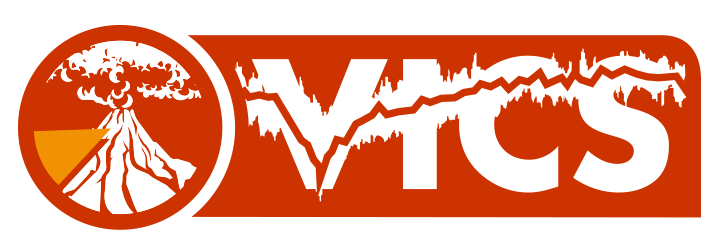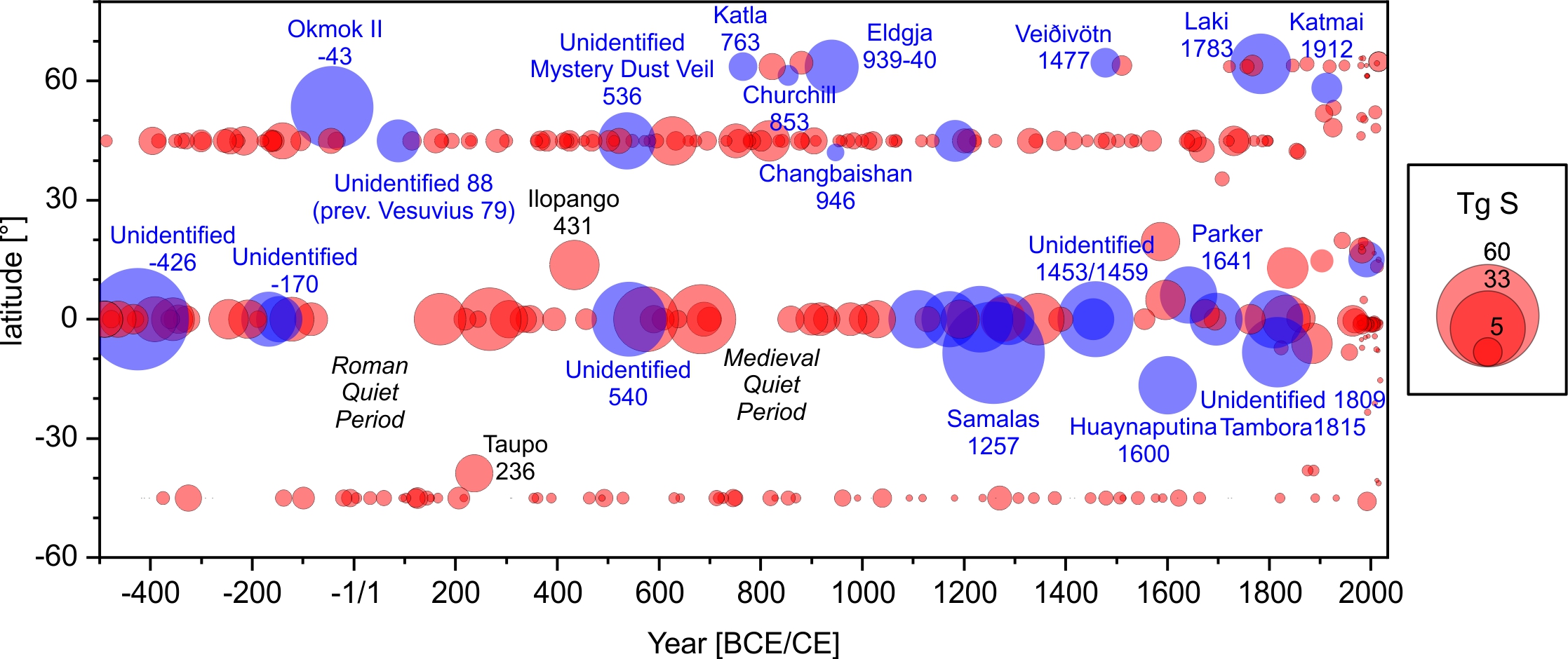- Home
- Publications
- PAGES Magazine
- Moving Forward By Looking Back: Past and Future Volcanic Impacts On Climate and Society
Moving forward by looking back: Past and future volcanic impacts on climate and society
Michael Sigl, P.M. Abbott, F. Ludlow, F. Riede, M. Toohey and C. Vidal
Past Global Changes Magazine
31(2)
125
2023
Michael Sigl1,
P.M. Abbott1,
F. Ludlow2,
F. Riede3,
M. Toohey4 and C. Vidal5
P.M. Abbott1,
F. Ludlow2,
F. Riede3,
M. Toohey4 and C. Vidal5
5th PAGES VICS workshop, Bern, Switzerland, and online, 22–24 May 2023
The Volcanic Impacts on Climate and Society (VICS) (pastglobalchanges.org/vics) working group (WG) has, since 2015, aimed to promote work that improves reconstructions of volcanic forcing, enhances understandings of volcanically induced climate variability, and deepens understandings of societal impacts and human responses to eruptions. As Phase 2 of VICS ends, this workshop (pastglobalchanges.org/calendar/26993) offered a valuable opportunity for the community to meet in-person for the first time since 2019, to share results and discuss future directions.
An interdisciplinary group of researchers covering proxy reconstructions, climate modeling, history, archaeology, volcanology, anthropology, biology, atmospheric science and risk mitigation joined the workshop, with around 70 people attending in Bern and ~20 more joining online. The presentations included 13 invited talks covering the wide range of workshop themes, with over two-thirds of the invited talks given by early-career researchers (ECRs).
The chronological scope of the volcanic eruptions and impacts discussed spanned from the Last Glacial Period to the end of the 21st century. Geographically, all continents were covered, with eruptions spanning four orders of magnitude (Volcanic Explosivity Index 4 to 8). Building on previous efforts for the Common Era, sulfur injections from Holocene volcanic eruptions have been reconstructed using polar ice-core records (Sigl et al. 2022; Fig. 1). This reconstruction allows us to estimate the frequency of Little-Ice-Age-type events in the Holocene, constrain global temperature projections in the 21st century (Chim et al. 2023), and quantify the risks of future volcanic eruptions (Cassidy and Mani 2022).
Model experiments increasingly emphasize that time of year, latitude, and eruption column height, and not just sulfur emissions, are crucial for understanding aerosol dispersal, and climatic effects (Marshall et al. 2019). Forensic geochemical analyses are shedding light on the strength and date of the mysterious Kuwae eruption in Vanuatu – a recurring case study for the VICS community. The search for the timing, size and impacts of this eruption is complemented by ongoing efforts based on oral traditions and intense volcanological fieldwork.
Several contributions emphasized that accurate and precise dating of eruptions is critical for understanding their climate effects (Reinig et al. 2021). Novel tools and integrative approaches in ice-core sciences, dendrochronology, radiocarbon dating, climate modeling and documentary records (e.g. using medieval lunar eclipses, as in Guillet et al. 2023; or ancient Babylonian dust-veil observations) that better constrain the timing of eruptions, potentially to the season, were discussed. Examples included the large caldera-forming eruptions of Samalas (1257 CE), Thera (ca. 1600 BCE), Aniakchak (1628 BCE), and Atitlan, as well as other impactful events.
As the impact of large volcanic eruptions on Northern Hemisphere summer temperature is relatively well understood, many contributions focused on other aspects, including the effects of eruptions on winter climate, monsoon circulation, Sahel precipitation, storm tracks and Southern Hemisphere temperatures. It was highlighted that not all societal impacts of eruptions are necessarily negative (e.g. increased fish catches following the ecosystem response to sea-surface cooling).
Looking towards the future, we discussed how we can use knowledge of past volcanic activity to better prepare for the climatic effects and economic risks of future eruptions (Mani et al. 2021). Negative volcanic effects may particularly occur in regions where most of the world’s present-day food production takes place, posing a significant risk to food security.
The workshop ended with a discussion regarding the future of the VICS WG. The overriding conclusion was that the open, supportive and diverse community that the VICS WG has developed since 2015 needs to be maintained. As the goals of the WG for Phases 1 and 2 have been largely achieved, new aims will be identified: possible developments discussed include a stronger focus on impacts in Asia and the Southern Hemisphere, exploring how past volcanic impacts could inform future work on solar radiation management, a greater focus on time periods earlier than the Holocene, and future predictions.
Acknowledgements
We thank PAGES, the Oeschger Centre for Climate Change (University of Bern), the Swiss National Science Foundation, and the Aarhus University Research Foundation for financial and logistical support.
affiliationS
1Climate and Environmental Physics and Oeschger Centre for Climate Change Research, University of Bern, Switzerland
2Department of History, Trinity College Dublin, Ireland
3School of Culture and Society, Aarhus University, Denmark
4Institute of Space and Atmospheric Studies, University of Saskatchewan, Saskatoon, Canada
5Department of Geography, University of Cambridge, UK
contact
Michael Sigl: michael.sigl unibe.ch
unibe.ch
references
Cassidy M, Mani L (2022) Nature 608: 469-471
Chim MM et al. (2023) Geophys Res Lett 50: e2023GL103743
Guillet S et al. (2023) Nature 616: 90-95
Mani L et al. (2021) Nat Commun 12: 4756
Marshall L et al. (2019) J Geophys Res-Atmos 124: 964-985

